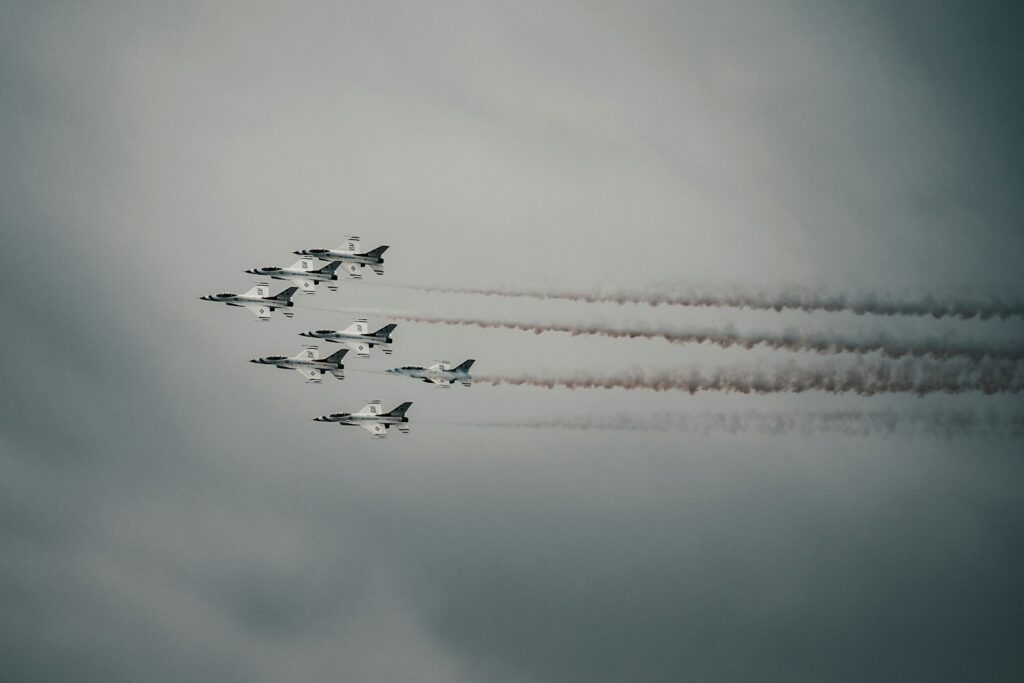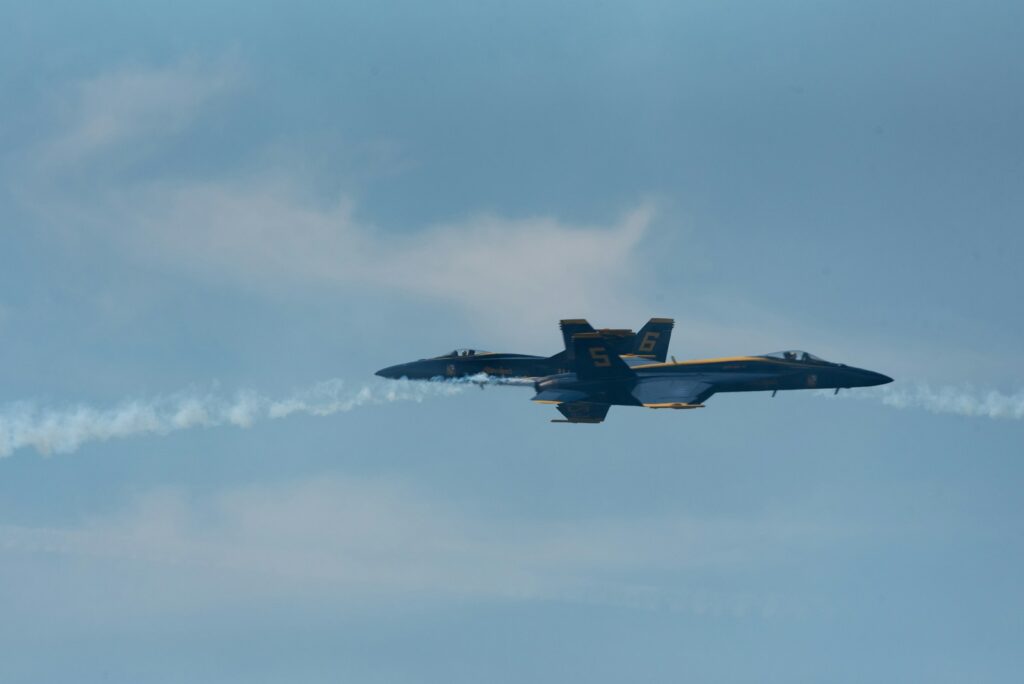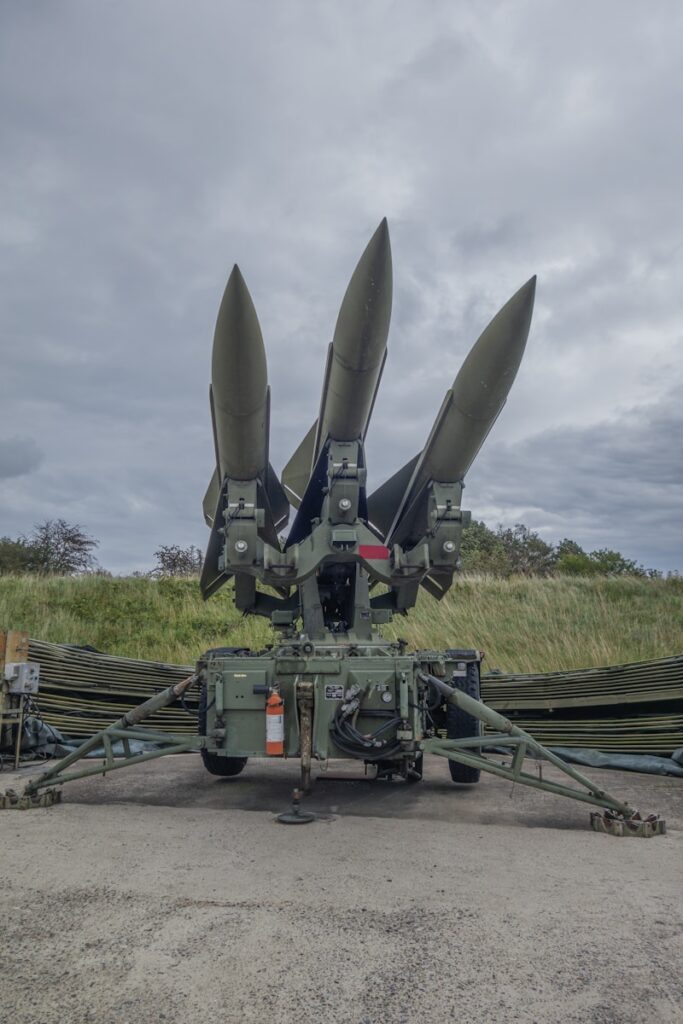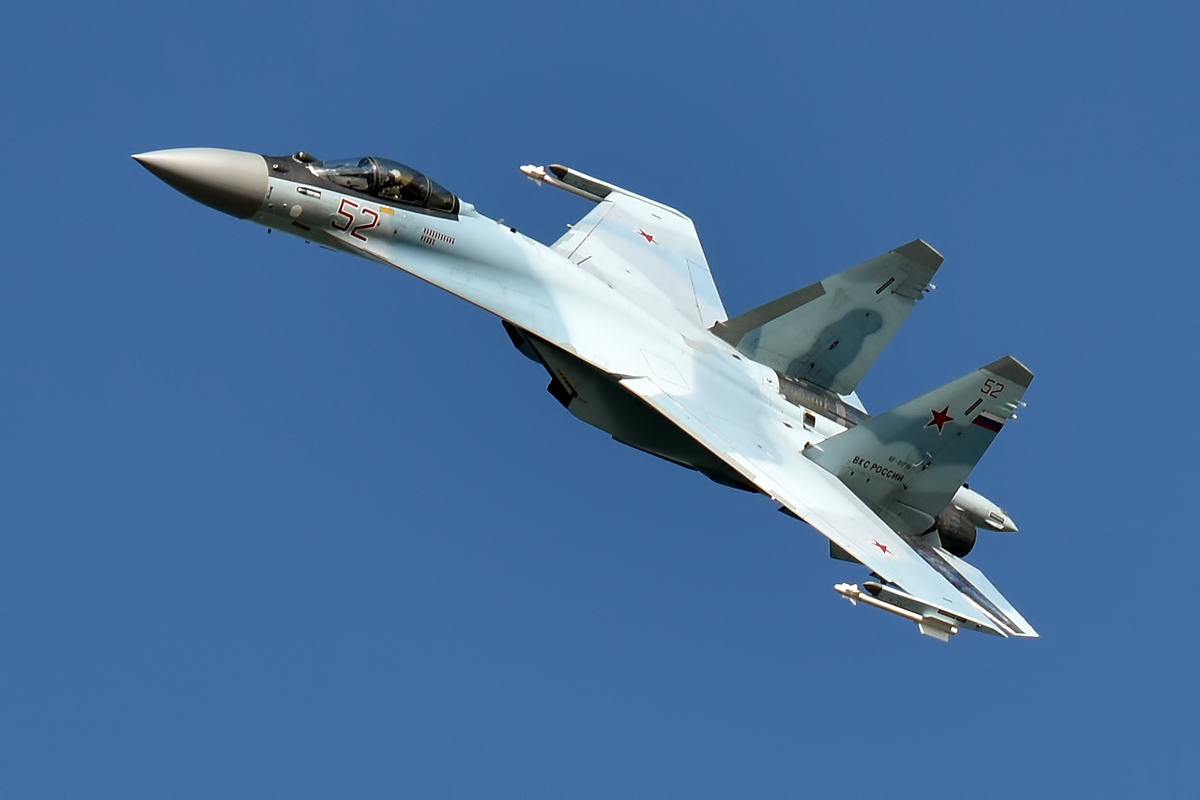
A significant event has unfolded in the skies over the border region, marking a major milestone for Ukraine’s air force and providing valuable insights that are reshaping the analysis of modern air combat dynamics. On June 7, a Ukrainian F-16 “Viper” fighter aircraft reportedly achieved a notable victory by shooting down a Russian Su-35 fighter-bomber over Russia’s Kursk region. This incident is significant not only as a loss for Russia but also as a potential demonstration of newly integrated capabilities and sophisticated tactical planning by Ukraine, extending air operations into what was previously considered safer airspace for Russian aircraft.
This reported shootdown highlights the evolving nature of the air war and the impact of Western military aid on Ukraine’s capabilities. Although the F-16 is a well-established platform, its effective use against a modern Russian fighter such as the Su-35 under these circumstances raises important questions about the technology, strategy, and coordination involved. The reported deployment of a US-made AIM-120 AMRAAM missile, along with the possible involvement of an airborne early warning and control (AEW&C) aircraft, suggests a complex coordination of assets working in unison.
To fully appreciate the significance of this event, it is necessary to analyze the core components and actions that reportedly led to this outcome. This account involves advanced technology, innovative tactics, and the ongoing adaptation required in the challenging environment of aerial warfare. The following discussion will explore the specifics of the shootdown, the aircraft involved, the weapons employed, and the critical support elements that analysts believe made this historic achievement possible.

A pivotal moment in the ongoing air war reportedly occurred on June 7th, when a Ukrainian F-16 fighter aircraft shot down a Russian Su-35 fighter-bomber. This marked a significant milestone as it is reported to be the first time a Ukrainian F-16 has achieved an air-to-air kill against a Russian aircraft. The engagement took place over Russia’s Kursk region, adding another layer of operational boldness to the event.
Initial unconfirmed reports emerged, but the Ukrainian Air Force subsequently released video footage on Sunday and posted an official claim on social media platform X on June 7. A brief statement on their Telegram channel specified that the Su-35S was downed “as a result of a successful operation in the Kursk direction.” This official acknowledgement lent weight to the earlier claims, highlighting the importance Ukraine placed on this specific incident.
The context surrounding this event underscores its historical significance. The F-16, a design originating some 50 years ago, was originally built for missions like this. Seeing it achieve its first reported air-to-air kill in Ukrainian service against a modern Russian fighter validates many of the arguments made for supplying these aircraft to Kyiv. While the precise details of the engagement remain subject to analysis, the fact of an F-16 downing a Su-35 represents a tangible shift in the capabilities available to Ukraine’s air force.

The reported location of the Su-35 shootdown adds a crucial dimension to its significance. The incident occurred over Russia’s Kursk region, near the town of Korenevo, reportedly about 10 miles inside Russian territory. This is not an engagement over the front lines or even near the immediate border within Ukrainian airspace; it represents a successful strike well within airspace Russia likely considered secure.
Ukrainian officials have been clear that their strikes are aimed at reducing Russia’s ability to launch missile and air attacks against Ukrainian cities and infrastructure. Such operations targeting deep Russian territory are expected to continue. While this specific shootdown was an air-to-air engagement rather than a strike on ground infrastructure, its location aligns with Ukraine’s stated goal of pushing the operational boundaries and holding Russian assets at greater risk, even when operating from their home bases or relatively close to the border on their side.
Previous examples of Ukraine pushing forward capabilities to target Russian aircraft operating with relative impunity have involved the strategic deployment of ground-based air defense systems. Starting in May 2023, Ukraine began pushing forward Patriot batteries to reach deep into Russian-controlled airspace, leading to successful downings of Russian aircraft over Russian territory bordering northeastern Ukraine and later over the northwestern Black Sea. This reported F-16 kill over Kursk, if confirmed to be part of a deliberate tactic, represents a continuation of this strategy, extending the threat range for Russian air assets operating even within their own borders.

The context strongly suggests that if a Ukrainian F-16 was responsible for downing the Su-35, the weapon used would have been the US-made AIM-120 Advanced Medium-Range Air-to-Air Missile (AMRAAM). This missile is the F-16’s primary air-to-air weapon, designed for engaging targets beyond visual range. It represents a significant capability enhancement for Ukraine compared to the air-to-air missiles typically carried by their legacy Soviet-era aircraft.
The AIM-120 is a radar-guided missile known for its “fire-and-forget” capability, allowing the launching aircraft to turn away after firing. Ukrainian F-16s are documented as carrying these missiles, often alongside shorter-range infrared-guided AIM-9X or AIM-9L/M Sidewinder missiles. Notably, Ukrainian F-16s have also been seen sporting the more advanced and longer-ranged C-series AMRAAMs, indicating Ukraine is receiving more capable variants of the missile. These missiles are not only crucial for air-to-air combat but are also employed by Ukrainian F-16s flying regular counter-drone and counter-cruise-missile sorties.
The arrival and use of the AIM-120 were anticipated as a critical factor in potentially altering the air balance. Even before the F-16s were delivered, analysis highlighted the advantage this missile would bring. Ukraine’s air force has faced challenges from Russia’s long-range R-37 air-to-air missile, which Russian aircraft fire from great distances to limit their own risk. Giving Ukraine a “longer stick,” any longer stick, was seen as highly valuable. Ukrainian fighter pilots themselves reportedly believed that a missile like the AIM-120 would make the biggest difference in countering this long-range threat.

The aircraft reportedly downed by the Ukrainian F-16 was a Russian Su-35S Flanker fighter. This is a significant target, as the Su-35 is considered one of Russia’s most modern combat aircraft currently in widespread service. It is classified as a “fourth-and-a-half-generation” fighter, representing a substantial upgrade and derivation of the earlier Su-27 design.
The Su-35 features vastly upgraded avionics compared to its predecessors, incorporating advanced systems aimed at improving situational awareness, targeting capabilities, and electronic warfare. It is also known for its high maneuverability, partly thanks to its thrust-vectoring engines. These features, combined with its powerful NIIP N035 Irbis radar set (a Passive Electronic Scanning Array or PESA), theoretically make it a formidable opponent in air combat and capable of engaging targets at significant ranges.
According to the tracking website Oryx, which monitors equipment losses in the conflict based on visual confirmation, this was reportedly the eighth example of the Su-35S lost in combat since the start of Russia’s full-scale invasion in February 2022. What makes this loss particularly noteworthy is that it is also reported to be the first of this aircraft type to be lost in an air-to-air kill by a Ukrainian pilot, or indeed any pilot from any nation in this conflict. The downing of such a relatively modern and capable platform by an F-16 highlights potential vulnerabilities or tactical disadvantages that can be exploited in modern air warfare, regardless of the theoretical capabilities of the aircraft involved.
While the F-16 and the AIM-120 are capable platforms, unverified claims, notably from the German newspaper Bild, point to a key enabler that was crucial to the reported Su-35 shootdown: a Swedish-made Saab 340 airborne early warning and control (AEW&C) aircraft. If these reports are accurate, this aircraft played a pivotal role in the engagement, effectively leveling the playing field for the F-16.
The core idea is that the Saab 340 AEW&C acted as a long-range sensor, detecting the Russian Su-35 from a significant distance – reportedly around 200 to 300 kilometers (124-186 miles) away. This detection occurred well outside the effective detection range of the F-16’s own radar against a target like the Su-35, especially considering that initial F-16s supplied to Ukraine were reportedly stripped of certain advanced systems like the Link 16 datalink needed for extended-range targeting without external cueing.
By detecting the target at such a range, the AEW&C aircraft could then transmit the Su-35’s location and targeting data to the F-16 pilot. This allowed the Ukrainian fighter to approach the target with superior situational awareness and, crucially, launch its AIM-120 missile without needing to rely solely on its own radar for initial detection and tracking. This capability is critical because it allows the F-16 to fire its missile from a range and position that is advantageous, potentially before the Su-35 is even fully aware it has been detected and targeted, effectively negating the Su-35’s theoretical long-range radar and missile advantages in a head-to-head scenario. A Canadian pilot and aviation expert reportedly stated this precisely: “The Su-35 didn’t even realize it was being targeted.”

To understand the role of the Saab 340 AEW&C, it’s important to look at its technical capabilities. The aircraft itself is based on a civilian twin-turboprop airliner airframe, but it is distinguished by a prominent, characteristic ‘balance beam’ radar fairing mounted on its upper fuselage. This fairing houses the Saab (previously Ericsson) Erieye active electronically scanned array (AESA) radar system.
AESA radars are a modern type of radar that use numerous small transmit/receive modules to electronically steer the radar beam, allowing for very rapid scanning, tracking of multiple targets simultaneously, and resistance to jamming. The Erieye AESA radar is designed to detect both air and sea targets. According to specifications, it can achieve detection ranges of up to around 280 miles (approximately 450 kilometers), although the effective range against a specific target like a fighter jet would depend on various factors. The aircraft typically operates at altitudes around 20,000 feet, giving its radar a wide, unobstructed view of the surrounding airspace, extending its detection horizon far beyond what a ground-based radar or a fighter jet’s radar operating at lower altitudes can achieve.
Crucially, the Saab 340 AEW&C is fitted with the NATO-standard Link 16 datalink communications system. This system is essential for modern integrated air defense systems (IADS). It allows the operators onboard the AEW&C aircraft to synthesize a comprehensive, real-time air defense ‘picture’ of the battlespace and share this detailed information, including targeting data, with compatible systems in the air and on the ground. For Ukraine, this means the AEW&C can act as a critical node, feeding high-quality target information directly to F-16s and Western-supplied ground-based air defense systems like Patriot, enabling coordinated and effective engagements over long distances.

The reported downing of the Su-35 is described not as a typical dogfight but as an “ingenious aerial ambush,” indicating a pre-planned operation exploiting Russian vulnerabilities. This fits Ukraine’s prior tactics of luring Russian aircraft into traps rather than engaging them directly in unfavorable conditions.
According to reports, the Su-35 attempted to intercept Ukrainian jets conducting precision strikes, but was instead ambushed. The scenario likely involved a Saab 340 AEW&C aircraft detecting the Su-35 at long range and providing targeting data to an F-16 via datalink. This allowed the F-16 to launch an AIM-120 missile while staying beyond the Su-35’s detection or engagement range. The missile reportedly struck near the Russian border, suggesting a calculated, close-range engagement with a high probability of success. This tactic highlights how superior situational awareness from AEW&C support can overcome limitations in platform radar range.
More broadly, the event reflects Ukraine’s growing ability to integrate advanced Western systems like the F-16 into its legacy Soviet-style air force. Despite the steep learning curve in training, logistics, and operations, Ukraine has managed to field these aircraft within a year. Their rapid deployment signals Ukraine’s adaptability and resolve to exploit modern Western capabilities in a contested battlespace.

One of the major points highlighted by analysts regarding Ukraine’s initial F-16s was the reported stripping of certain advanced systems, particularly the Link 16 datalink. This NATO-standard system is crucial for modern integrated air defense systems, allowing aircraft to share a real-time picture of the battlespace and receive targeting data from assets like AEW&C planes. Without it, an F-16 would be more reliant on its own radar for initial detection and tracking, potentially putting it at a disadvantage against Russian aircraft firing long-range missiles like the R-37.
This is where the Saab 340 AEW&C reportedly became indispensable in the June 7th incident. If the unverified claims are true, the AEW&C, with its powerful Erieye AESA radar, detected the Su-35 from a distance far exceeding the F-16’s own radar capabilities, especially against a fighter-sized target. It then reportedly transmitted this targeting data to the F-16, allowing the pilot to position themselves and launch the AIM-120 effectively.
This dynamic, as outlined when the Saab 340s were first pledged, demonstrates how AEW&C can work as a fighter control asset, prioritizing targets and assigning them for interception. By feeding high-quality target information directly to the F-16, the AEW&C essentially compensates for the reported limitations of the F-16’s onboard systems or lack of full Link 16 integration, enabling engagements that might otherwise be impossible or significantly riskier for the Ukrainian pilot. It’s a prime example of combining different assets in a network to achieve a result greater than the sum of their individual capabilities.

The reported use of the AIM-120 AMRAAM missile in this shootdown underscores its strategic importance for Ukraine. For a long time, Ukrainian aircraft have faced a significant challenge from Russian aircraft employing the long-range R-37 air-to-air missile. Russian pilots could fire the R-37 from great distances, limiting their own risk while posing a serious threat to Ukrainian fighters.
The arrival of the AIM-120 gives Ukraine a much-needed “longer stick” to counter this threat. Even before F-16s were delivered, analysis suggested that this missile would be a critical factor in potentially altering the air balance. Ukrainian fighter pilots themselves reportedly felt that a missile like the AIM-120 would make the biggest difference in addressing this long-range discrepancy.
Having a capable, beyond-visual-range missile like the AIM-120 allows Ukrainian F-16s to hold Russian aircraft at risk from greater distances. This capability is not only vital for air-to-air engagements against fighters but, as noted, Ukrainian F-16s also use AIM-120s in regular sorties against drones and cruise missiles. The successful use of the AIM-120 against a Su-35, if confirmed, validates its potential to force Russian aircraft to operate with greater caution and potentially reduce their ability to strike with impunity from extended ranges.

The potential downing of a modern Su-35 by a Ukrainian F-16, particularly when supported by an AEW&C aircraft, provides tangible evidence for theories about how Western military aid could shift the air balance in the conflict. Many analysts predicted that the introduction of advanced NATO fighters like the F-16, especially when equipped with capable missiles, would make it much more difficult for Russia to operate its air assets freely over Ukrainian territory or near the border.
While the F-16s arriving in Ukraine are older models, this event suggests that, when integrated into a sophisticated network (like one enabled by AEW&C), they can still be highly effective even against Russia’s more modern platforms. It validates the idea that superior situational awareness and tactical coordination can overcome raw theoretical aircraft capability differences.
This incident supports the argument that giving Ukraine advanced air assets allows them to contest airspace in new ways and hold previously relatively safe Russian operations at risk. If older F-16s can pose a credible threat to Su-35s under the right circumstances, it forces Russian planners to reconsider their tactics and potentially limits their freedom of action in the air. This isn’t just about one plane lost; it’s about demonstrating a new potential vulnerability for Russian air assets.

While the focus is often on successful engagements, it’s also important to acknowledge the realities of air warfare, which include losses. Amidst the reports of success, Ukraine has also experienced F-16 losses since introducing the type. According to the context, Ukraine has so far lost three F-16s.
The circumstances surrounding these losses are not always clear, and it’s noted that it’s not confirmed how many were due to enemy engagements compared to other causes. The most recent reported loss occurred last month during an “emergency situation” where the pilot successfully ejected after destroying three air targets. Earlier losses include pilots killed in battle, such as Pavlo Ivanov in April and Oleksiy Mes’ in August 2024, who reportedly shot down multiple Russian missiles and drones before his F-16 went down during a massive Russian attack.
These losses underscore the dangerous environment in which Ukrainian pilots operate and the inherent risks of aerial combat. While Western aircraft bring enhanced capabilities, they are not invulnerable. The sacrifice of pilots like Oleksiy Mes’ highlights the bravery required and the ongoing costs of the air war, even as Ukraine gains new tools to fight.

The reported Su-35 shootdown and the tactical approach seemingly employed using AEW&C support have significant long-term implications for how analysts view modern air combat. It highlights the increasing importance of integrated systems, where platforms like AEW&C act as force multipliers, extending the reach and effectiveness of fighter jets operating within the network.
This event demonstrates that the future of air warfare is not solely about the capabilities of a single aircraft type in isolation, but rather how different assets are networked and used in concert. Superior situational awareness provided by platforms like AEW&C can negate theoretical advantages held by opponent aircraft, enabling successful engagements even with older fighter designs. It reinforces the lesson that clever tactics and effective integration of support assets are just as, if not more, important than the individual specifications of frontline aircraft.
The fact that Ukraine, facing a technologically advanced adversary, can reportedly use a combination of Western-supplied aircraft, missiles, and support platforms to achieve results like the Su-35 shootdown underscores the adaptability and ingenuity required in modern conflict. This event will likely be studied for years to come, offering valuable lessons on the effectiveness of airborne early warning and control in enabling aerial ambushes and shifting the balance of power in contested airspace.

Beyond air-to-air combat, Ukraine’s F-16s are quickly taking on a broader mission scope. While initial deployments focused on integrating the platform, the context mentions the type flying combined air operations and being noted on various occasions lobbing Small Diameter Bombs (SDB). This indicates that Ukraine is rapidly expanding the roles assigned to their new Western fighters.
Ukrainian F-16s are already documented as flying regular counter-drone and counter-cruise-missile sorties, utilizing their AIM-120 missiles for these tasks. The ability to conduct both air-to-air and air-to-ground missions provides Ukraine with much-needed flexibility and capability that their aging Soviet-era fleet struggled to provide effectively in the face of Russia’s aggression.
As experience builds and additional F-16 examples are delivered (with around 85 operational F-16s reportedly promised), the type’s significance in the air war is only set to grow. While integrating an entirely new combat aircraft type is a challenge, the successful shootdown incident, combined with the expanding mission set, suggests the F-16 is becoming an increasingly vital and versatile part of Ukraine’s arsenal, promising further impacts on the course of the air conflict as more jets and trained pilots become available.
This reported Su-35 shootdown serves as a powerful illustration of how the complex tapestry of modern aerial warfare is woven not just from advanced hardware, but from the strategic integration of disparate systems and the tactical ingenuity to leverage their combined strengths. It’s a dynamic battlefield where innovation and adaptation are key, and where seemingly less advanced platforms, when used intelligently, can still achieve remarkable results against formidable opponents. As more F-16s join the fray and Ukraine continues to refine its tactics, the skies above remain a crucial and fascinating theater of this ongoing conflict.



